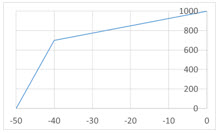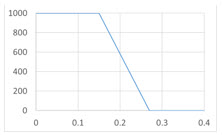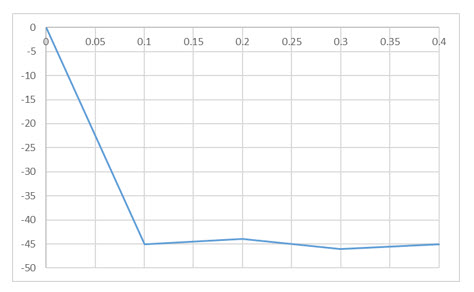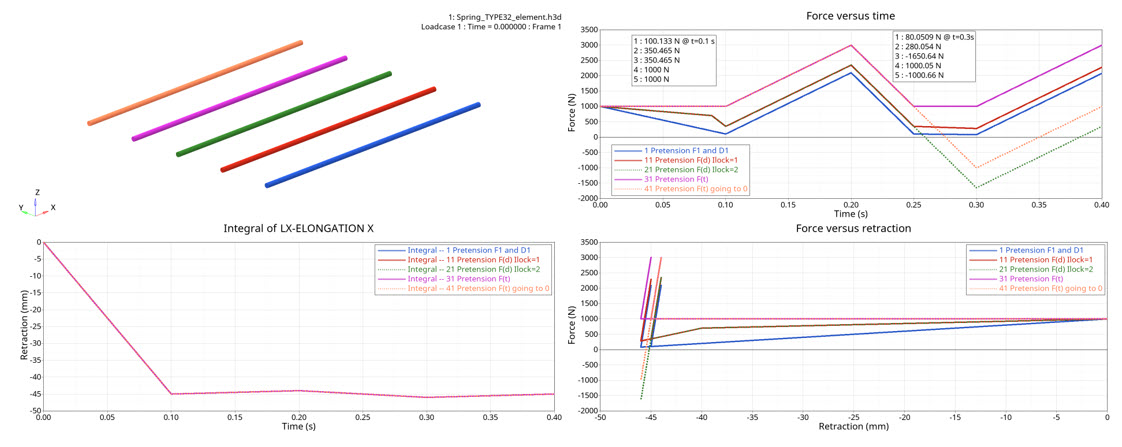RD-V: 0031 Pretensioner Spring (TYPE32)
Pretensioner spring force for different stiffness formulations.
The subject of this study is to verify the behavior of the pretensioner spring element for the different behavior.
Options and Keywords Used
Input Files
Model Description
Units: Mg, s, mm, MPa
- Common parameter
- Mass = 1E-5 Mg
- Linear stiffness after locking = 1000 N/mm
- Spring 1
- Initial pretension force = 1000 N
- Maximum retraction value = 50mm
| Spring 1 | Spring 2 | Spring 3 | Spring 4 | Spring 5 |
|---|---|---|---|---|
| Initial force = 1000 N Max. retraction = 50 mm |
Force versus retraction defined by curve | Force versus retraction defined by curve | Force versus time defined by curve | Force versus time defined by curve going to 0 |
| Ilock=1 | Ilock=1 |
Ilock=2 |
Ilock=1 |
Ilock=1 |

Figure 1.
The other end of the spring element is clamped.
Results

Figure 2. force version retraction and time
| Time (s) | Retraction (mm) | Spring 1 | Spring 2 | Spring 3 | Spring 4 | Spring 5 |
|---|---|---|---|---|---|---|
| 0 | 0 | 1000 | 1000 | 1000 | 1000 | 1000 |
| 0.1 | 45 | 100 | 350 | 350 | 1000 | 1000 |
| 0.2 | 44 | 2100 | 2350 | 2350 | 3000 | 3000 |
| 0.3 | 46 | 80 | 280 | -1650 | 1000 | -1000 |
| 0.4 | 45 | 2080 | 2280 | 350 | 3000 | 1000 |
Conclusion
The Radioss computation returns results very close to the theoretical values with the expected behavior for the retraction behavior.